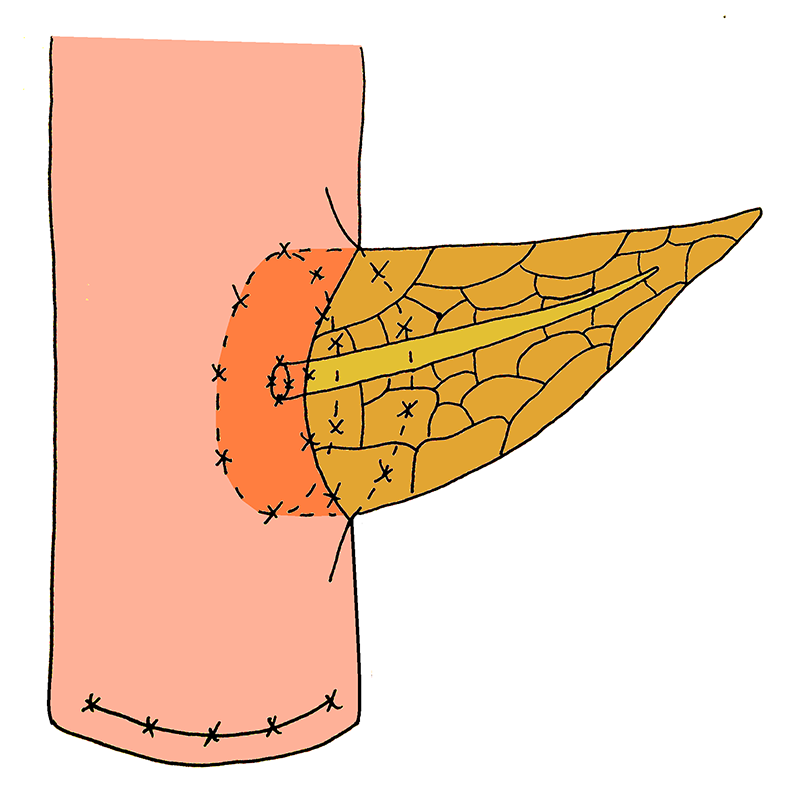The first layer of sutures exists of an approximation between the capsule of the pancreatic remnant and the jejunal serosa posteriorly. The seromuscular coat of the jejunum is incised for a length with the same size as the diameter of the pancreatic stump. The posterior second suture-row is performed between the pancreatic cut end and the extramucosal or seromuscular layer of the jejunum.
Triple-layered duct-to-mucosa pancreatojejunostomy
- The first layer of sutures exists of an approximation between the capsule of the pancreatic remnant and the jejunal serosa posteriorly.
- The seromuscular coat of the jejunum is incised for a length with the same size as the diameter of the pancreatic stump.
- The posterior second suture-row is performed between the pancreatic cut end and the extramucosal or seromuscular layer of the jejunum.
- Opposite to the main pancreatic duct, an incision is made in the jejunal mucosa with a size that matches the diameter of the pancreatic duct.
- A duct-to-mucosa anastomosis is applied circumferentially, forming the third suture-row.
- The second suture-row is continued anteriorly, suturing the anterior pancreatic cut margin and the anterior seromuscular jejunal layer together.
- The pancreatic anastomosis is finished by completing the first layer of sutures on the anterior side of the pancreatic capsule and jejunal serosa.
- Ibrahim S, Tay KH, Launois B, Ta NC. Triple-layer duct-to-mucosa pancreaticojejunostomy after pancreaticoduodenectomy. Dig Surg. 2006;23:296-302.
- Su AP, Zhang Y, Ke NW, et al. Triple-layer duct-to-mucosa pancreaticojejunostomy with resection of jejunal serosa decreased pancreatic fistula after pancreaticoduodenectomy. J Surg Res. 2014;186:184-191.
- Tsuji M, Kimura H, Konishi K, Yabushita K, Maeda K, Kuroda Y. Management of continuous anastomosis of pancreatic duct and jejunal mucosa after pancreaticoduodenectomy: historical study of 300 patients. Surgery. 1998;123:617-621.



